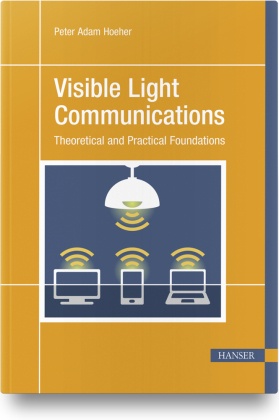Visible Light Communications - Theoretical and Practical Foundations
| Verlag | Hanser Fachbuchverlag |
| Auflage | 2019 |
| Seiten | 264 |
| Format | 16,5 x 24,4 x 1,6 cm |
| Gewicht | 465 g |
| Artikeltyp | Englisches Buch |
| ISBN-10 | 3446462066 |
| EAN | 9783446462069 |
| Bestell-Nr | 44646206M |
Visible Light Communication (VLC) is an emerging wireless data transmission technology. Light is used simultaneously for illumination as well as for communication and/or positioning purposes. If fully networked, dubbed Li-Fi, VLC systems complement Wi-Fi access points. VLC is an incident of optical wireless communications (OWC). OWC systems provide high data security, are license-free, and may substitute radio systems when these either fail or are not permitted. VLC technology enhances smart lighting infrastructure and Internet-of-Things (IoT) use cases. LED-based Car-to-X communication is an enabling platform towards autonomous driving.
The textbook covers OWC applications, fundamentals of illumination engineering, channel modeling, optical intensity modulation schemes, VLC standardization efforts, the software-defined radio concept, selection criteria of photonic devices, fundamental circuit designs, and visible light positioning.
The book is written for students i n electrical and information engineering or adjacent areas, as well as for engineers, information scientists, and physicists in research and development.
Leseprobe:
1. Introduction
2. Fundamentals of Illumination Engineering
3. VLC and IR/UV Channel Modeling
4. Modulation Schemes for Optical Wireless Communications
5. Optical Multiple-Input Multiple-Output (MIMO) Techniques
6. OWC Standardization
7. Software-Defined Radio Concept and its Applications in OWC
8. Photonic Devices and High-Speed Ampflifiers
9. Circuit Design Rules for OWC Transmitters and Receivers
10. Selected VLC and FSO Applications
11. Optical Rangefinding and Visible Light Positioning

